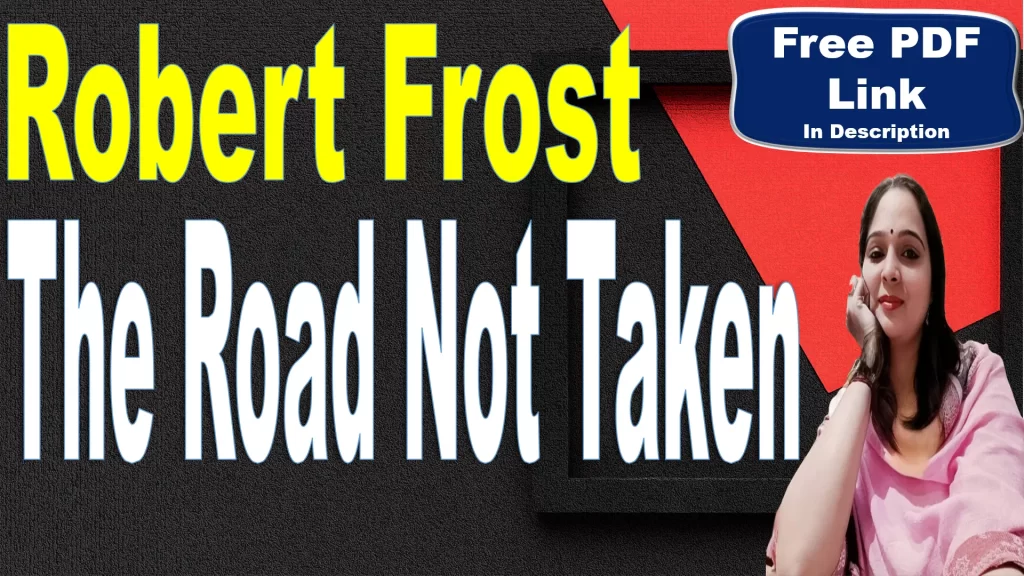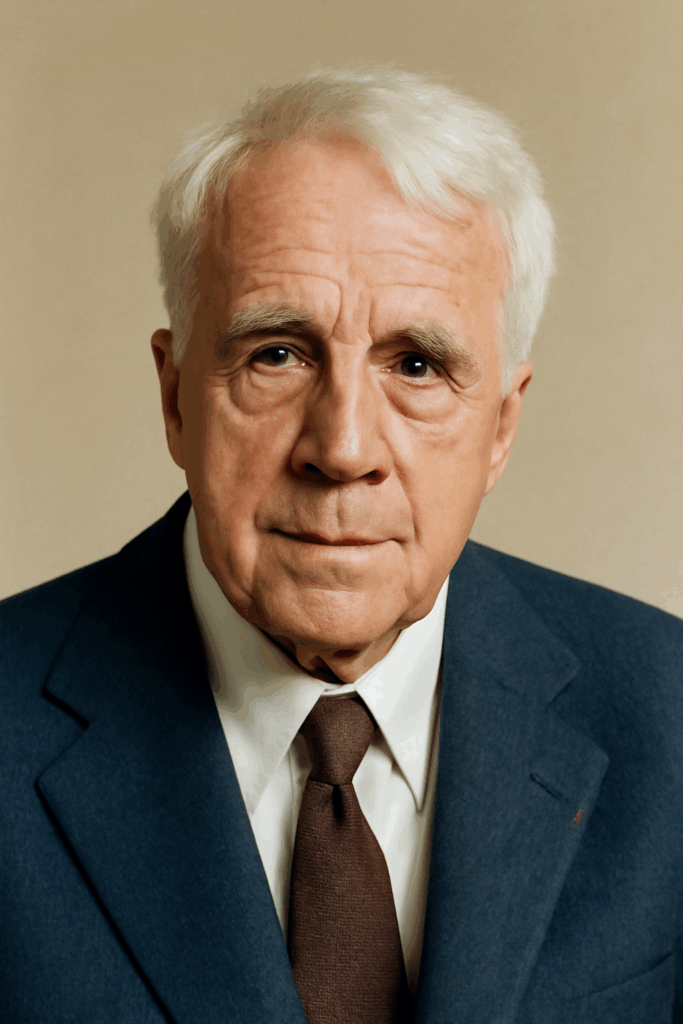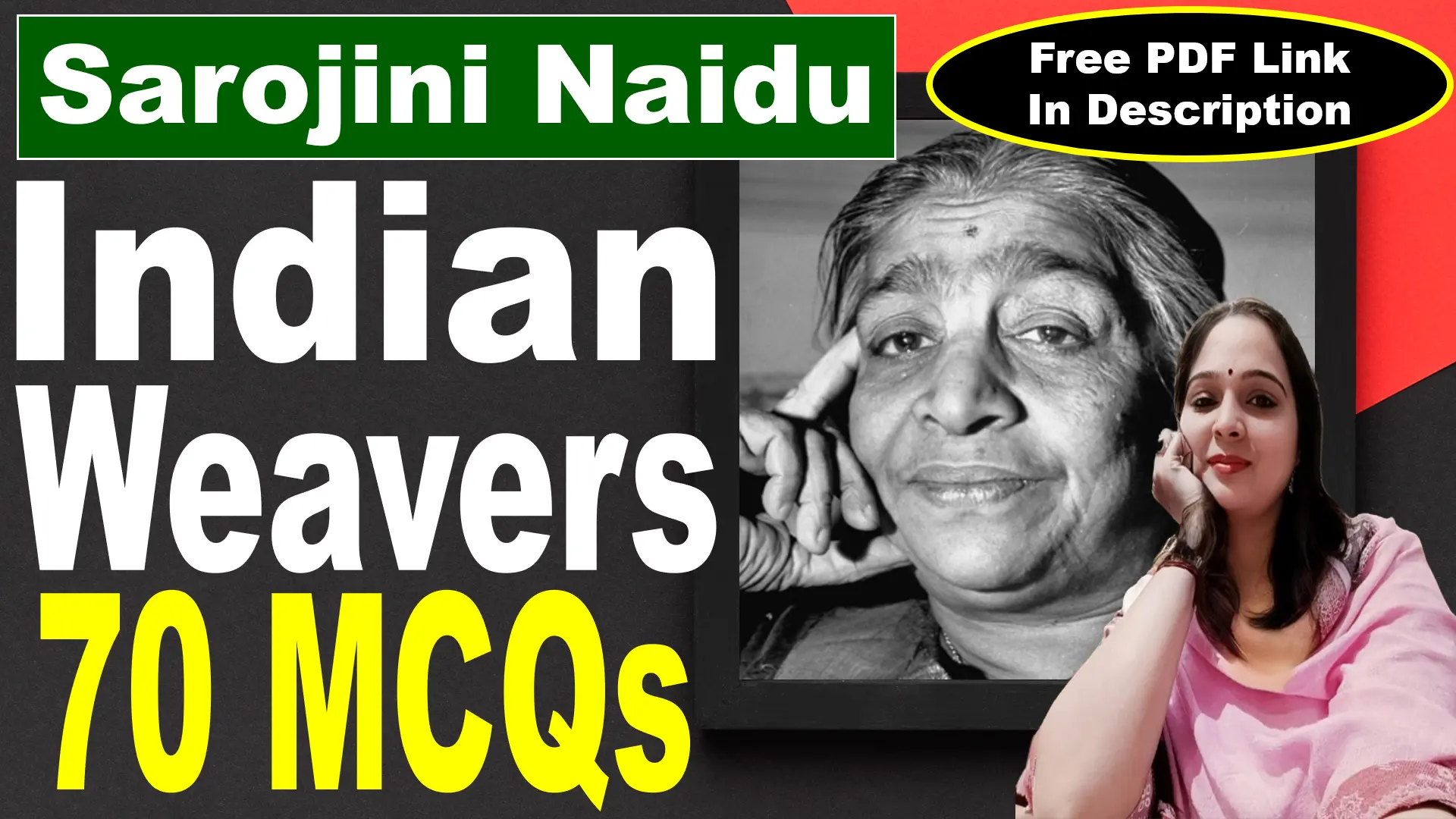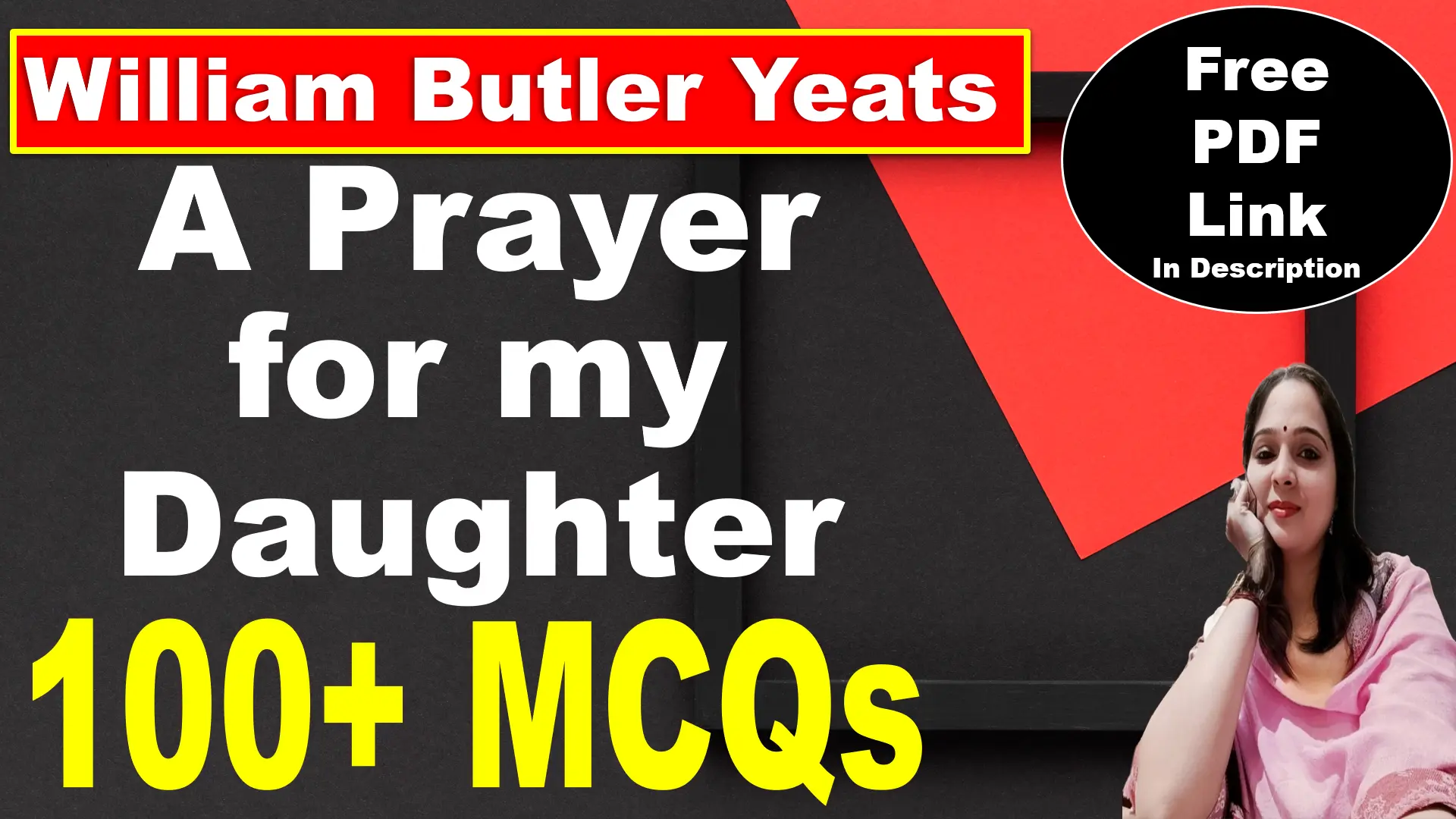
Two roads diverged in a yellow wood,
And sorry I could not travel both
And be one traveler, long I stood
And looked down one as far as I could
To where it bent in the undergrowth;
Then took the other, as just as fair,
And having perhaps the better claim,
Because it was grassy and wanted wear;
Though as for that the passing there
Had worn them really about the same,
And both that morning equally lay
In leaves no step had trodden black.
Oh, I kept the first for another day!
Yet knowing how way leads on to way,
I doubted if I should ever come back.
I shall be telling this with a sigh
Somewhere ages and ages hence:
Two roads diverged in a wood, and I—
I took the one less traveled by,
And that has made all the difference.
Introduction
Robert Frost wrote The Road Not Taken in 1915, likely during the spring or early summer while he was living in England. The poem was inspired by walks with his close friend, fellow poet Edward Thomas, in the Gloucestershire countryside. During their strolls, the two often discussed choices and debated which paths to take, inspiring the poem’s central metaphor of diverging roads. Frost later revealed that the poem was partly a gentle mockery of Thomas’s habitual indecision, yet it evolved to express broader and more universal themes about life’s choices and their consequences.
The Road Not Taken was first published in the August 1915 issue of The Atlantic Monthly. It was then included in Frost’s third poetry collection, Mountain Interval, published in November 1916 by Henry Holt and Company in the United States. This collection helped solidify Frost’s reputation as a major American poet, and The Road Not Taken emerged as one of his most iconic and widely analyzed works.
Summary
Robert Frost wrote The Road Not Taken in 1915, likely during the spring or early summer while he was living in England. The poem was inspired by walks with his close friend, fellow poet Edward Thomas, in the Gloucestershire countryside. During their strolls, the two often discussed choices and debated which paths to take, inspiring the poem’s central metaphor of diverging roads. Frost later revealed that the poem was partly a gentle mockery of Thomas’s habitual indecision, yet it evolved to express broader and more universal themes about life’s choices and their consequences.
The Road Not Taken was first published in the August 1915 issue of The Atlantic Monthly. It was then included in Frost’s third poetry collection, Mountain Interval, published in November 1916 by Henry Holt and Company in the United States. This collection helped solidify Frost’s reputation as a major American poet, and The Road Not Taken emerged as one of his most iconic and widely analyzed works.
The poem describes a moment when the speaker stands in a “yellow wood” where two roads split. He wishes he could take both but, as one person, he must choose. He looks down one road as far as he can, until it bends and disappears. He then picks the other road, which seems just as nice but looks less worn, with grass suggesting fewer people have walked it. However, he notes both paths actually look similar, with leaves untouched by footsteps that morning.
The speaker decides to take the less-traveled road, saying he’ll save the other for another day, but deep down, he doubts he’ll return because one choice leads to another. He imagines himself years later, telling this story “with a sigh,” saying he chose the road “less traveled by” and that it “made all the difference.” The sigh could mean he’s happy, regretful, or a bit of both—Frost leaves it unclear.
The poem uses the roads to represent life’s choices. It shows how decisions, even small ones, can change everything, and we often wonder about the paths we didn’t take. The simple language and vivid images, like the autumn forest, make the poem relatable. Its rhythm and rhyme feel like a conversation, pulling readers into the speaker’s thoughts.
The poem’s big ideas are about choosing your own way, dealing with uncertainty, and looking back on life. It doesn’t say if the speaker’s choice was right or wrong, which makes it powerful—readers can see their own choices in it. The Road Not Taken remains popular because it captures the human experience of deciding and wondering “what if.”
The Road Not Taken Analysis
Two roads diverged in a yellow wood,
And sorry I could not travel both
And be one traveler, long I stood
And looked down one as far as I could
To where it bent in the undergrowth;
Reference to Context:
The opening stanza of The Road Not Taken by Robert Frost, written in 1915 and published in The Atlantic Monthly in August 1915, introduces the speaker standing at a fork in a “yellow wood,” faced with two diverging paths. This moment symbolizes a critical life decision. The speaker, inspired by Frost’s walks with his friend Edward Thomas in England, reflects on the impossibility of taking both paths as a single individual. The stanza sets the scene in an autumn forest, capturing the speaker’s hesitation and contemplation as he evaluates one road before making a choice.
Explanation:
In these five lines, the speaker describes a literal and metaphorical crossroads. The “two roads diverged in a yellow wood” paints a vivid picture of a forest path splitting, with “yellow” suggesting an autumn setting, a time of transition, which mirrors the speaker’s life stage or decision point. The phrase “sorry I could not travel both” reveals the speaker’s regret at being unable to explore both options, emphasizing the limitation of being “one traveler.” This highlights a universal human experience: the necessity of choosing one path over another. The speaker’s prolonged pause (“long I stood”) underscores the weight of the decision, while looking “down one as far as I could” shows an attempt to foresee the consequences, though the path’s bend “in the undergrowth” obscures the future, symbolizing life’s uncertainty. The stanza establishes the poem’s central theme of choice and sets a reflective, introspective tone, preparing readers for the speaker’s eventual decision in later stanzas.
Poetic devices:
Metaphor: The “two roads” serve as a metaphor for life choices, representing different paths or opportunities one might pursue.
Imagery: Vivid visual imagery, such as “yellow wood” and “bent in the undergrowth,” creates a clear, autumnal scene, evoking a sense of place and transition.
Symbolism: The “yellow wood” symbolizes a transitional phase in life, while the diverging roads symbolize choices and their consequences.
Enjambment: Lines like “And sorry I could not travel both / And be one traveler” flow without punctuation breaks, mirroring the speaker’s continuous thought process and hesitation.
Personification: The roads are subtly personified as options that invite or challenge the traveler, setting up the decision-making tension.
Then took the other, as just as fair,
And having perhaps the better claim,
Because it was grassy and wanted wear;
Though as for that the passing there
Had worn them really about the same,
Reference to Context:
This second stanza of The Road Not Taken by Robert Frost, written in 1915 and published in The Atlantic Monthly in August 1915, continues the speaker’s reflection at a fork in a “yellow wood.” After contemplating the first road in the opening stanza, the speaker now evaluates and chooses the second road. The poem, inspired by Frost’s walks with his friend Edward Thomas in England, uses the diverging paths as a metaphor for life choices. This stanza captures the moment of decision, highlighting the speaker’s reasoning and the subtle differences between the two paths.
Explanation:
In these five lines, the speaker describes choosing the second road, which appears “just as fair” as the first, suggesting both paths are equally appealing. However, the speaker notes it “perhaps” has the “better claim” because it is “grassy and wanted wear,” implying it is less traveled and more inviting. The word “perhaps” introduces ambiguity, showing the speaker’s uncertainty about the choice. The phrase “wanted wear” personifies the road, suggesting it desires to be walked on. However, the speaker then undercuts this reasoning, admitting that “the passing there / Had worn them really about the same.” This reveals that the difference between the roads is minimal—both are similarly worn, despite the initial perception. The stanza explores the human tendency to justify choices with small distinctions, even when outcomes are uncertain, and sets up the poem’s later reflection on the significance of this decision.
Poetic Device:
Metaphor: The roads continue to symbolize life choices, with the choice of the “grassy” road representing a preference for a less conventional path.
Imagery: Descriptions like “grassy and wanted wear” create a vivid picture of a lush, inviting path, contrasting with the more worn appearance of the other.
Personification: The road “wanted wear,” giving it a human-like desire to be chosen, emphasizing its appeal to the speaker.
Enjambment: Lines like “And having perhaps the better claim, / Because it was grassy” flow without pause, mirroring the speaker’s continuous thought process.
And both that morning equally lay
In leaves no step had trodden black.
Oh, I kept the first for another day!
Yet knowing how way leads on to way,
I doubted if I should ever come back.
Reference to Context:
This third stanza of The Road Not Taken by Robert Frost, written in 1915 and published in The Atlantic Monthly in August 1915, continues the speaker’s reflection on choosing between two diverging paths in a “yellow wood.” Inspired by Frost’s walks with his friend Edward Thomas in England, the poem uses the roads as a metaphor for life choices. Having chosen the “less traveled” road in the second stanza, the speaker now reflects on the moment of decision, the state of the paths, and the likelihood of returning to explore the unchosen road.
Explanation:
In these five lines, the speaker describes the two paths as they appeared “that morning,” both covered in leaves “no step had trodden black,” suggesting neither has been heavily traveled. The fresh leaves imply a new, unspoiled moment, reinforcing the idea that the speaker is at a pivotal point. The exclamation “Oh, I kept the first for another day!” conveys a hopeful intention to revisit the unchosen road, but this optimism is immediately undercut by the sober realization: “Yet knowing how way leads on to way.” This phrase captures how one choice leads to others, creating a chain of consequences that makes returning unlikely. The stanza ends with “I doubted if I should ever come back,” expressing the speaker’s doubt and resignation that life’s momentum may prevent revisiting past possibilities. This moment deepens the poem’s themes of choice, irreversibility, and the fleeting nature of opportunities.
Poetic Device:
Metaphor: The roads continue to symbolize life choices, with the unchosen road representing missed opportunities or alternative paths.
Imagery: The vivid image of leaves “no step had trodden black” evokes a pristine, untouched scene, emphasizing the freshness of the moment and the equality of the paths.
Symbolism: The “leaves” symbolize newness or untried possibilities, while “way leads on to way” symbolizes life’s interconnected choices and their cumulative effect.
Enjambment: Lines like “In leaves no step had trodden black. / Oh, I kept” flow without pause, reflecting the speaker’s continuous thought process.
I shall be telling this with a sigh
Somewhere ages and ages hence:
Two roads diverged in a wood, and I—
I took the one less traveled by,
And that has made all the difference.
Reference to Context:
This final stanza of The Road Not Taken by Robert Frost, written in 1915 and published in The Atlantic Monthly in August 1915, concludes the speaker’s reflection on choosing between two diverging paths in a “yellow wood.” Inspired by Frost’s walks with his friend Edward Thomas in England, the poem uses the roads as a metaphor for life choices. After describing the decision-making process and its immediate aftermath in the previous stanzas, this stanza fast-forwards to the speaker imagining how they will recount this choice in the distant future, emphasizing its lasting impact.
Detailed Explanation:
In these five lines, the speaker projects themselves into the future, envisioning a time “ages and ages hence” when they will tell this story “with a sigh.” The sigh is ambiguous—it could suggest regret, contentment, nostalgia, or a mix of emotions, leaving the tone open to interpretation. The speaker summarizes the moment: “Two roads diverged in a wood, and I— / I took the one less traveled by.” This restates the choice made in the second stanza, emphasizing the road’s perceived uniqueness, though earlier stanzas suggested the roads were similar. The final line, “And that has made all the difference,” underscores the profound impact of the choice, but Frost leaves unclear whether this difference was positive or negative. The stanza explores how we narrate our past to make sense of our lives, highlighting themes of individuality, reflection, and the transformative power of choices.
Poetic Device:
Metaphor: The “two roads” remain a metaphor for life choices, with the “less traveled” road symbolizing a unique or nonconformist path.
Imagery: The phrase “ages and ages hence” evokes a distant, almost mythical future, creating a reflective, timeless quality.
Symbolism: The “sigh” symbolizes complex emotions—regret, satisfaction, or wistfulness—tied to reflecting on past choices.
Enjambment: The pause in “and I— / I took” creates a dramatic break, emphasizing the speaker’s agency in the choice.
Hyperbole: “Ages and ages hence” exaggerates the time frame, suggesting the choice’s enduring significance.
Key Points
Author
Name: Robert Frost (1874–1963), an American poet.
Background: Born in San Francisco, Frost moved to Massachusetts after his father’s death. He struggled early as a poet, working as a farmer and teacher. In 1912, he moved to England, where he published his first collections, A Boy’s Will (1913) and North of Boston (1914). Returning to the U.S. in 1915, he became a celebrated poet, winning four Pulitzer Prizes. His poetry often explores rural life, nature, and human choices.
Connection to Poem: Written in 1915, The Road Not Taken was inspired by Frost’s walks with poet Edward Thomas in England, where they discussed choices during countryside strolls. Published in The Atlantic Monthly (August 1915) and later in Mountain Interval (1916), it reflects Frost’s focus on decision-making and individuality.
Form (Rhyme Scheme & Structure)
Form: The Road Not Taken by Robert Frost is a lyric poem consisting of four stanzas, each with five lines (quintains). The poem is written in a narrative style, presenting a personal reflection on a moment of choice. Its conversational tone and vivid imagery make it accessible, while its structured form underscores the speaker’s contemplative process.
Meter: The poem is primarily written in iambic tetrameter, meaning each line typically has four iambic feet (an iamb is an unstressed syllable followed by a stressed syllable: da-DUM). This creates a rhythmic, walking-like cadence that mirrors the speaker’s journey and decision-making. For example, in the first line, “Two roads | di-verged | in a | yel-low | wood,” the iambic pattern is clear, though Frost occasionally varies the meter for emphasis or natural speech. Some lines may deviate slightly, incorporating anapests (two unstressed syllables followed by a stressed one) to maintain a conversational flow.
Rhyme Scheme: The rhyme scheme is ABAAB in each stanza. The first, third-, and fourth-lines rhyme with each other, while the second- and fifth-lines rhyme. For instance, in the first stanza:
“wood” (A)
“both” (B)
“stood” (A)
“could” (A)
“growth” (B)
This interlocking rhyme scheme creates a sense of continuity and forward movement, reflecting the speaker’s progression through the decision. The rhymes are simple and unobtrusive, enhancing the poem’s natural, reflective tone without feeling overly formal.
Speaker
Identity: The speaker is an unnamed individual, likely reflecting Frost’s own perspective or a universal figure. The use of “I” makes it personal and relatable.
Characteristics: The speaker is introspective, hesitant, and reflective, weighing options carefully and later pondering the choice’s impact. They value individuality, choosing the “less traveled” road, but also express doubt and ambiguity about the outcome.
Role: The speaker narrates a past decision and imagines retelling it in the future, serving as a lens for readers to explore their own choices.
Setting
Physical Setting: The poem is set in a “yellow wood,” a forest with autumn-colored leaves, where two roads diverge. The “undergrowth” and “grassy” path suggest a rural, natural environment.
Time: The choice occurs one morning, with fresh leaves “no step had trodden black.” The final stanza shifts to an imagined future (“ages and ages hence”).
Symbolic Setting: The forest represents a transitional moment in life, and the diverging roads symbolize choices or opportunities. The autumn setting suggests change or maturity.
Theme
Choice and Consequence: The poem explores how decisions, even small ones, shape life’s path and lead to irreversible outcomes.
Individuality: Choosing the “less traveled” road reflects a preference for uniqueness or nonconformity.
Uncertainty and Ambiguity: The speaker’s doubt and the unclear “difference” highlight the unpredictability of choices.
Reflection and Memory: The poem examines how we look back on decisions, shaping narratives to define our lives.
Regret and Satisfaction: The “sigh” suggests mixed emotions about the choice, blending regret, nostalgia, or contentment.
Plot
Stanza 1: The speaker stands at a fork in a forest where two roads diverge. Feeling sorry they can’t take both, they look down one road as far as possible, until it bends out of sight.
Stanza 2: The speaker chooses the other road, which seems equally nice but “grassy and wanted wear,” suggesting it’s less used. They note both roads are actually worn similarly.
Stanza 3: Both paths are covered in untouched leaves that morning. The speaker hopes to try the first road later but doubts they’ll return, knowing “way leads on to way.”
Stanza 4: In the future, the speaker imagines telling this story “with a sigh,” saying they took the “less traveled” road, which “made all the difference,” though the outcome is unclear.
Tone
Reflective: The speaker looks back on the choice with thoughtfulness, considering its impact.
Ambiguous: The “sigh” and vague “difference” suggest mixed feelings—regret, satisfaction, or nostalgia—leaving the tone open-ended.
Contemplative: The careful weighing of paths and future storytelling create a meditative mood.
Wistful: A slight sense of longing or “what if” pervades, especially in the doubt about returning to the unchosen road.
Style
Conversational: Frost uses simple, everyday language, making the poem accessible and relatable.
Imagery: Vivid images like “yellow wood,” “grassy” path, and “leaves no step had trodden black” create a clear, sensory setting.
Metaphorical: The roads symbolize life choices, adding depth to the straightforward narrative.
Traditional Form: The iambic tetrameter and ABAAB rhyme scheme give a structured, musical quality, balancing simplicity with sophistication.
Subtle Irony: The speaker’s claim of choosing the “less traveled” road contrasts with the earlier admission that both were similar, hinting at self-justification.
Message
The poem suggests that life is shaped by the choices we make, even when the options seem similar or their outcomes unclear. It encourages embracing individuality by taking one’s own path, but also acknowledges the uncertainty and mixed emotions that come with decisions. We may never know “what might have been,” and the stories we tell about our choices define who we are. Frost leaves the “difference” ambiguous, inviting readers to reflect on their own paths and find personal meaning in the poem.
Robert Frost

Robert Frost (1874–1963) was an American poet, widely regarded as one of the most influential literary figures of the 20th century. Known for his accessible yet profound poetry, Frost often explored themes of nature, human choice, isolation, and the complexities of rural life, using simple language and vivid imagery.
Early Life
Born: March 26, 1874, in San Francisco, California.
Family: His father, a journalist, died when Frost was 11. After this, his mother moved the family to Lawrence, Massachusetts.
Education: Attended Dartmouth College briefly and later Harvard University but did not complete a degree. Mostly self-educated through wide reading in literature and philosophy.
Early Struggles: Worked as a teacher, farmer, and cobbler while writing poetry. Faced rejection from publishers and financial difficulties.
Move to England and Breakthrough
In 1912, at age 38, Frost moved with his family to England to focus on writing, as American publishers were uninterested.
Published his first two poetry collections in England:
A Boy’s Will (1913): Showcased lyrical style and themes of youth and nature.
North of Boston (1914): Included narrative poems like “Mending Wall” and “The Death of the Hired Man,” gaining critical praise.
Became friends with poets such as Edward Thomas, who inspired The Road Not Taken.
Returned to the U.S. in 1915, where his reputation grew after his works were republished.
Major Works and Style
Notable Collections:
Mountain Interval (1916): Includes The Road Not Taken and Birches.
New Hampshire (1923): Features Stopping by Woods on a Snowy Evening, won a Pulitzer Prize.
Other collections: West-Running Brook (1928), A Further Range (1936), earning additional Pulitzers.
Style:
Used conversational language with traditional meters and rhyme.
Set poems in rural New England, using nature as a backdrop for exploring human emotions and choices.
Combined simple language with deep philosophical themes.
Famous Poems:
The Road Not Taken: About choice and individuality.
Stopping by Woods on a Snowy Evening: Reflection on temptation and duty.
Mending Wall: Explores boundaries and human relationships.
Fire and Ice: Examines destructive emotions.
Later Life and Achievements
Taught at colleges like Amherst and Middlebury, mentoring young writers.
Won four Pulitzer Prizes (1924, 1931, 1937, 1943), a rare accomplishment.
Became a beloved public figure, famously reading The Gift Outright at JFK’s 1961 inauguration.
Traveled internationally, including a visit to the Soviet Union in 1962.
Died January 29, 1963, in Boston, Massachusetts, aged 88.
Legacy
Influenced modern American poetry by blending traditional forms with accessible language and universal themes.
Received many honors, including the Congressional Gold Medal (1960) and being named Poet Laureate of Vermont.
Popularized phrases like “the road less traveled” and “good fences make good neighbors.”
Personal tragedies, including the loss of his wife and children, shaped the somber tone in some of his poems.
Connection to The Road Not Taken
Written in 1915 and published in Mountain Interval (1916), The Road Not Taken was inspired by Frost’s friendship with Edward Thomas.
The poem reflects themes of choice, individuality, and reflection, consistent with Frost’s exploration of human decisions in rural settings.
Word Meaning
| Tough Word | Meaning in English | Meaning in Hindi |
| Diverged | Split into two different directions. | दो दिशाओं में बँट जाना |
| Yellow | The autumn color of the forest, showing change. | पीला; यहाँ शरद ऋतु के जंगल का रंग, परिवर्तन का प्रतीक |
| Undergrowth | Thick bushes and plants under trees in a forest. | जंगल में पेड़ों के नीचे घनी झाड़ियाँ और पौधे |
| Fair | Nice-looking or equally good. | सुंदर या समान रूप से आकर्षक |
| Claim | The road’s appeal or reason to be chosen. | दावा; यहाँ रास्ते की अपील या गुण |
| Grassy | Covered with grass, looking fresh or less used. | घास से ढका, ताजगी या कम उपयोग का संकेत |
| Wanted | Needed or lacked; the road needed more walking on it. | कमी; रास्ते को अधिक उपयोग की जरूरत |
| Wear | Marks or damage from being walked on. | घिसाव; यहाँ रास्ते पर चलने के निशान |
| Passing | People walking or traveling through. | चलना; यहाँ रास्तों पर पैरों के निशान |
| Trodden | Stepped on, leaving marks. | पैरों से कुचला या चला गया |
| Sigh | A deep breath showing feelings like sadness, relief, or memory. | आह या लंबी साँस, पछतावा, राहत या उदासीनता |
| Hence | In the future, from now on. | अब से; भविष्य में |
| Difference | A big change or effect caused by the choice. | अंतर; यहाँ चयन से होने वाला महत्वपूर्ण बदलाव |
The Road Not Taken Questions and Answers
Very Short Answer Questions
Who wrote The Road Not Taken?
Robert Frost wrote The Road Not Taken.
When was the poem first published?
It was first published in August 1915.
In which magazine was it first published?
The poem was first published in The Atlantic Monthly.
What collection includes The Road Not Taken?
It’s part of Frost’s collection Mountain Interval.
When was Mountain Interval published?
Mountain Interval was published in 1916.
What is the setting of the poem?
The poem is set in a yellow wood with two diverging roads.
What does the “yellow wood” symbolize?
The yellow wood symbolizes a time of change or transition.
How many stanzas does the poem have?
The poem has four stanzas.
How many lines are in each stanza?
Each stanza has five lines.
What is the rhyme scheme of the poem?
The rhyme scheme is ABAAB.
What is the meter of the poem?
The meter is iambic tetrameter.
Who is the speaker of the poem?
The speaker is an unnamed traveler reflecting on a choice.
What choice does the speaker face in the poem?
The speaker must choose between two diverging roads.
Which road does the speaker choose?
The speaker chooses the road “less traveled by.”
What does the speaker say about the roads’ condition?
Both roads were worn about the same and had untouched leaves.
What emotion does the speaker express with a “sigh”?
The sigh suggests regret, nostalgia, or mixed feelings.
What does the speaker doubt in the third stanza?
The speaker doubts they will ever come back to try the other road.
What is a key theme of the poem?
A key theme is the impact of choices on life.
What poetic device is used in “yellow wood”?
Imagery is used to describe the autumnal forest.
What does “made all the difference” mean?
It means the choice greatly changed the speaker’s life.
Short Answer Questions
What inspired Robert Frost to write The Road Not Taken?
Robert Frost wrote the poem in 1915, inspired by walks with his friend Edward Thomas in England. During their countryside strolls, they often debated which path to take, and Thomas was indecisive. Frost wrote the poem as a light-hearted jab at Thomas’s hesitation, but it evolved into a deeper reflection on life choices. It was published in The Atlantic Monthly in August 1915.
Describe the setting of The Road Not Taken.
The poem is set in a “yellow wood,” a forest with autumn leaves, suggesting a time of change. Two roads diverge in this forest, and the speaker describes one as “grassy” and the other bending into the “undergrowth.” The scene happens in the morning, with fresh leaves “no step had trodden black.” Symbolically, the forest represents a turning point in life.
What is the main theme of the poem?
The main theme is the impact of choices on life’s path. The speaker faces two roads and picks the “less traveled” one, showing individuality. The poem explores how decisions lead to irreversible outcomes, as the speaker doubts returning to the other road. It also reflects on how we look back on choices with mixed feelings.
Explain the speaker’s decision-making process in the poem.
The speaker stands at a fork, wishing they could take both roads but knowing they can’t. They look down one road as far as possible, then choose the other because it’s “grassy and wanted wear,” seeming less used. However, they admit both roads are worn similarly, showing the choice is based on perception. The decision is made with hesitation and hope to revisit the other path later.
What is the significance of the “sigh” in the final stanza?
In the last stanza, the speaker says they’ll tell this story “with a sigh” in the future. The sigh suggests complex emotions—possibly regret, nostalgia, or satisfaction—about the choice made. It shows the speaker reflecting on how the decision shaped their life, but Frost leaves it unclear if the sigh is positive or negative. This ambiguity invites readers to interpret the outcome.
How does Frost use imagery in The Road Not Taken?
Frost uses vivid imagery to create a clear picture, like the “yellow wood” showing an autumn forest, symbolizing change. The “grassy” road and “leaves no step had trodden black” suggest freshness and untouched paths. The “undergrowth” where one road bends adds a sense of mystery. This imagery makes the setting relatable and deepens the poem’s symbolic meaning.
What is the rhyme scheme and meter of the poem, and how do they contribute to its effect?
The poem has an ABAAB rhyme scheme, with lines 1, 3, and 4 rhyming, and lines 2 and 5 rhyming, creating a musical flow. It’s written in iambic tetrameter, with four stressed-unstressed beats per line, mimicking a walking rhythm. This structure makes the poem feel conversational and reflective. It also contrasts the speaker’s uncertainty with a sense of order, enhancing the theme of choice.
How does the poem reflect the theme of individuality?
The speaker chooses the road “less traveled by,” suggesting a preference for a unique path over a common one. This choice reflects individuality and nonconformity, as the speaker values a less conventional option. However, the poem also notes both roads were similar, hinting that individuality might be a perception. It shows the importance of personal choice in defining one’s identity.
What role does ambiguity play in the poem’s message?
Ambiguity is key, as the speaker’s “sigh” and the “difference” made by the choice are unclear—possibly showing regret or satisfaction. The roads being “worn about the same” adds doubt about the “less traveled” claim. This ambiguity lets readers project their own experiences onto the poem. It suggests life’s choices are uncertain, and their true impact is often unknown.
How does The Road Not Taken connect to Robert Frost’s broader work?
Like many of Frost’s poems, The Road Not Taken uses a rural setting—a forest—to explore human experiences, a common theme in his work. It reflects his focus on choices and their consequences, seen in poems like Stopping by Woods on a Snowy Evening. Frost’s conversational style and use of nature as a metaphor are also typical. The poem’s depth beneath simplicity aligns with Frost’s reputation for blending accessibility with profound ideas.
Essay Type Questions
Write the critical appreciation of the poem “The Road Not Taken”.
Introduction
The Road Not Taken, written by Robert Frost in 1915 and first published in The Atlantic Monthly in August 1915, is one of the most celebrated poems in American literature. Included in Frost’s 1916 collection Mountain Interval, the poem was inspired by Frost’s walks with his friend Edward Thomas in England, where they often discussed choices during countryside strolls. The poem narrates a traveler’s decision to choose between two diverging paths in a forest, using this moment as a metaphor for life’s choices. Its universal themes and accessible language have made it a timeless piece, often quoted for its reflection on individuality and decision-making.
Central Idea
The central idea of The Road Not Taken is the impact of choices on one’s life and the inevitable reflection that follows. The speaker faces two roads and chooses the “less traveled” one, symbolizing a preference for individuality, but later wonders about the unchosen path. The poem explores how decisions, even seemingly small, lead to irreversible outcomes, shaping our lives in profound ways. It also examines how we narrate our past, often with a mix of regret, satisfaction, or ambiguity, as seen in the speaker’s future “sigh.”
Structure & Rhyme Scheme
The poem consists of four stanzas, each with five lines (quintains), totaling 20 lines. It follows a consistent ABAAB rhyme scheme, where the first, third-, and fourth-lines rhyme, and the second and fifth rhyme (e.g., “wood/stood/could,” “both/growth”). The meter is iambic tetrameter, with four iambic feet per line (da-DUM), creating a rhythmic, walking-like cadence that mirrors the speaker’s journey. Slight variations in meter occur for natural speech. This structured form contrasts with the speaker’s uncertainty, enhancing the tension between choice and consequence, while the rhyme adds a musical, memorable quality.
Theme
The poem explores several themes:
Choice and Consequence: It highlights how decisions shape life’s path, with the speaker choosing one road and later reflecting on its impact.
Individuality: The “less traveled” road symbolizes a unique, nonconformist path, emphasizing personal agency.
Uncertainty and Ambiguity: The speaker’s doubt and the vague “difference” reflect the unpredictability of choices.
Reflection and Regret: The future “sigh” suggests mixed emotions—regret, nostalgia, or satisfaction—about past decisions.
Irreversibility of Choices: The line “way leads on to way” shows how one choice leads to others, making it hard to return to past options.
Style
Frost’s style in the poem is conversational and accessible, using simple language that resonates with a wide audience. The poem is set in a rural, natural environment—a “yellow wood”—a hallmark of Frost’s work, where nature often mirrors human experiences. The narrative structure, moving from the moment of choice to future reflection, creates a personal, relatable tone. Frost blends traditional poetic forms with a modern, reflective voice, balancing structure with emotional depth. Subtle irony emerges as the speaker’s claim of a “less traveled” road contrasts with the earlier admission that both were similar, adding complexity.
Poetic Devices
Frost employs several poetic devices to enrich the poem:
Metaphor: The diverging roads symbolize life choices, with the “less traveled” road representing individuality.
Imagery: Vivid images like “yellow wood,” “grassy” path, and “leaves no step had trodden black” create a sensory autumnal setting, symbolizing transition.
Symbolism: The “yellow wood” signifies change, and the “sigh” represents complex emotions like regret or contentment.
Personification: The road “wanted wear,” suggesting it desires to be chosen, adding appeal.
Enjambment: Lines like “And sorry I could not travel both / And be one traveler” flow without pause, mirroring the speaker’s thought process.
Critical Commentary
The Road Not Taken is a masterful blend of simplicity and depth, showcasing Frost’s ability to address universal human experiences within a traditional form. The poem’s strength lies in its ambiguity—the speaker’s “sigh” and the unspecified “difference” allow readers to project their own emotions, making it deeply personal. Frost’s use of nature as a metaphor is effective, with the autumnal forest reflecting life’s transitions. The structured rhyme and meter contrast with the theme of uncertainty, highlighting the tension between freedom and constraint in decision-making. However, some critics argue the poem is often misread as a straightforward celebration of individuality, overlooking Frost’s subtle irony: the roads were “worn about the same,” suggesting the “less traveled” narrative may be a self-justification. This irony adds a layer of complexity, showing how we shape our stories to define our identities.
Message
The poem’s message is that life is shaped by the choices we make, even when their outcomes are uncertain. It encourages embracing individuality by taking one’s own path, but also acknowledges the inevitability of doubt and reflection. The ambiguity of the “difference” suggests that the true impact of our choices may remain unknown, yet the act of choosing defines us. Frost invites readers to reflect on their own decisions, recognizing that every choice, big or small, leads to a unique journey with lasting consequences.
Conclusion
The Road Not Taken remains a timeless poem due to its universal themes of choice, individuality, and reflection. Frost’s skillful use of form, imagery, and ambiguity creates a work that is both accessible and profound, resonating with readers across generations. The poem’s enduring appeal lies in its ability to capture the human experience of decision-making—its challenges, uncertainties, and transformative power. As a reflection on life’s paths, it continues to inspire introspection, making it a cornerstone of Frost’s legacy and American poetry.
Long note on themes of the poem “The Road Not Taken”.
Choice and Consequence
The poem centers on the speaker’s decision at a fork in a “yellow wood,” where “two roads diverged,” symbolizing life’s choices. The speaker chooses the “less traveled” road, hoping to revisit the other but doubting they will, as “way leads on to way.” In the final stanza, the speaker reflects that this choice “has made all the difference,” showing how even small decisions can profoundly shape one’s life. This theme underscores the ripple effect of choices, a recurring idea in Frost’s work, inspired by his own life’s pivotal decisions, like moving to England in 1912.
Individuality
The speaker’s choice of the road “less traveled by” reflects a preference for a unique path, suggesting a value for individuality over conformity. In the second stanza, the road is described as “grassy and wanted wear,” implying it’s less used, which appeals to the speaker’s desire for a distinct journey. However, the admission that both roads were “worn really about the same” adds irony, hinting that individuality might be a perception rather than reality. This theme aligns with Frost’s broader exploration of personal identity in rural settings, emphasizing self-reliance.
Uncertainty and Ambiguity
Uncertainty pervades the poem, as the speaker struggles to choose, noting both roads “equally lay” in leaves “no step had trodden black.” The final stanza’s “sigh” and vague “difference” leave the outcome unclear—whether the choice was good or regrettable. This ambiguity mirrors life’s unpredictability, where we often make decisions without knowing their full impact. Frost, inspired by Edward Thomas’s indecision during their walks, uses this theme to show the complexity of human choices, inviting readers to interpret the poem through their own experiences.
Reflection and Regret
The speaker imagines recounting this moment “with a sigh” in the future, “ages and ages hence,” suggesting a reflective tone tinged with regret, nostalgia, or satisfaction. The doubt about returning to the unchosen road—“I doubted if I should ever come back”—highlights the human tendency to wonder about “what might have been.” This theme captures the emotional weight of looking back on life’s choices. Frost’s own life, marked by personal losses and career struggles, often informed his reflective tone, making this theme deeply personal.
Irreversibility of Choices
The line “knowing how way leads on to way” in the third stanza illustrates how one decision leads to others, creating a chain of events that makes returning to the unchosen path unlikely. The speaker’s realization that they may never come back emphasizes the permanent nature of choices. This theme reflects the inevitability of life’s forward momentum, a concept Frost often explored in his poetry, such as in Stopping by Woods on a Snowy Evening. It underscores the finality of decisions and their role in shaping our paths.





